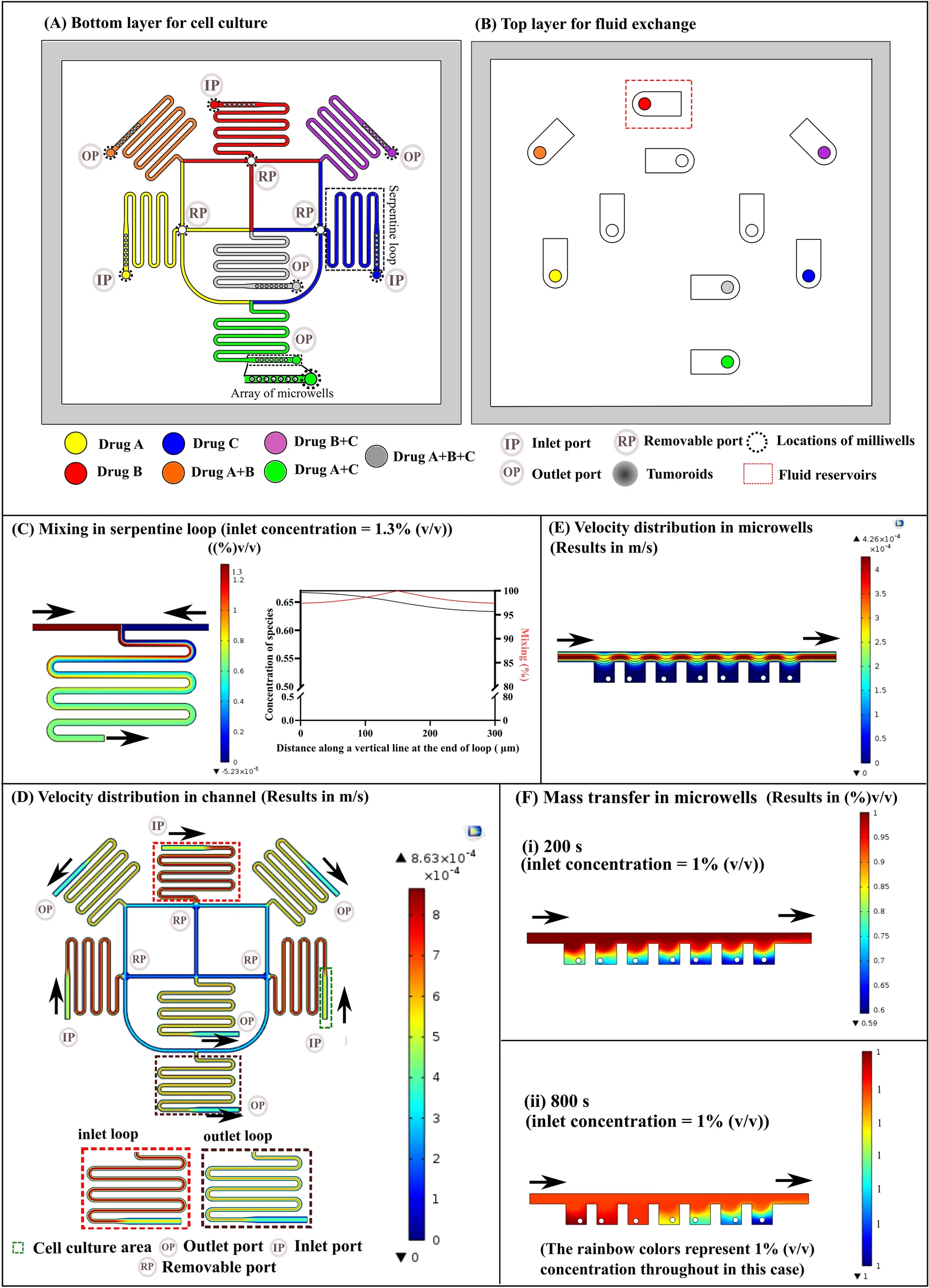
系统化评估功能化三嵌段聚合物F127-PDL的一步修饰以培养神经元细胞。
Introduction
思路:
- 聚二甲基硅氧烷(PDMS)是一种广泛使用的硅基聚合物,可用于从人造橡胶、医疗器械、表面活性剂到润滑剂以及日常生活中的各种应用(例如使头发光滑的洗发水和用于消泡的食品)。近年以来,PDMS成为了微流控芯片(即芯片实验室)中最常用的材料之一。在生命科学领域,如细胞/组织微工程,PDMS材料价格低廉、柔韧、化学惰性、光学透明、对细胞无毒、不透水、透气、微原型设计和制造方便,使其有利于在微观尺度上进行各种生物学研究。然而PDMS表面具有疏水性和细胞排斥性,导致哺乳动物细胞(特别是对细胞外微环境非常敏感的神经元细胞)的粘附和培养效果较差,极大地降低了PDMS微系统(如基于细胞的微平台和芯片)的细胞兼容性。因此,需要开发一种有效的表面改性方法,以促进细胞在PDMS相关界面上的粘附,从而扩展基于细胞培养的微工程应用。
- 目前修饰PDMS以建立细胞粘附表面的方法通常分为物理涂层和化学耦合两大类。PDMS表面上的诸如胶原蛋白、层粘连蛋白和聚赖氨酸到的物理涂层可以改善细胞粘附,但无法在长期培养中维持,即粘附稳定性低。形成粘附性PDMS界面的化学耦合非常稳定。然而由于PDMS的化学惰性,往往需要多步策略和有机溶剂、氧化剂或潜在有毒反应物的使用,这阻碍了在细胞微工程和生物医学微系统中开发PDMS粘附涂层。因此,有必要构建一种简单、有效且实用的方法,以在PDMS表面上实现稳定且持久的细胞粘附/培养。
- 在此,作者发展了一种基于使用多聚赖氨酸偶联的Pluronic F127(F127-PDL,一种功能化的三嵌段聚合物)进行极为简单的PDMS表面修饰处理(即一步式修饰),并促进神经元在PDMS基底上高效粘附和培养的新方法。
- 在这项研究中,为了确认在PDMS材料上操纵微环境敏感神经元的稳健性能,作者系统地研究了通过已建立的易于操作的F127-PDL处理工艺修饰的PDMS表面上的神经元细胞粘附和培养。并对原代神经元细胞的粘附(细胞密度和面积)、分化(轴突-树突形成、轴突分支、树突和多树突生成)和生长(轴突和树突伸长)以及其在未修饰的PDMS和F127-PDL、F127、聚-D-赖氨酸(PDL)或聚-L-赖氨酸(PLL)修饰的PDMS表面对以及涂有PDL或PLL的聚苯乙烯(PS)表面上的培养进行了综合评估。此外,基于光学、荧光和免疫细胞化学检测分析了神经元细胞在F127-PDL修饰的PDMS表面上长期片上和片外培养期间与粘附、活力和神经元网络形成相关的细胞活动。同时,还对不同修饰的PDMS和PS表面之间的长期神经元细胞培养进行了比较评估。
Neuronal Cell Adhesion on F127-PDL-Modified PDMS

F127-PDL分子具有PDL基团基于静电相互作用增强神经元粘附的能力和F127基团基于疏水相互作用牢固吸附到PDMS界面上的能力。与PDL涂层相比,F127-PDL修饰可实现更稳定的神经元细胞粘附和长时间培养。

PDMS(绿)、F127-PDL修饰的PDMS(红)的傅立叶变换衰减全反射红外(ATR-FT-IR)光谱和F127-PDL(黄)的傅立叶变换红外(FT-IR)光谱。结果表明,F127-PDL修饰的PDMS表面的化学成分包含原始F127-PDL和天然PDMS表面的化学成分,F127-PDL分子很好地涂覆在PDMS基底上。

PDMS、F127-PDL修饰的PDMS、F127修饰的PDMS和PDL修饰的PDMS基底的水接触角。

F127-PDL修饰的PDMS表面在修饰后不同时间点(0、1、3、6和12 d)的接触角。

- (A-B)用未修饰的PDMS基底上的神经元细胞培养物作为空白对照,评估修饰的PDMS基底(带有F127-PDL、F127、PLL或PDL,A)和修饰的PS基底(带有代表性的修饰分子PLL或PDL,B)上原代神经元细胞的培养结果的白光图。
- (C)培养0.5 d后,在不同的PDMS和PS基底上附着的神经元细胞的密度(上)和面积(下)。
Neuronal Cell Differentiation and Growth on F127-PDL-Modified PDMS

- (A-D)培养1 d后,不同PDMS和PS基底上神经元细胞分化和生长的量化。包括轴突-树突分化(A)、轴突分支(B)、树突生成(C)、多树突生成(D)。
- (E-F)轴突生长(E)和树突生长(F)的量化。
Neuronal Cell Culture on F127-PDL-Modified PDMS

- (A)原代神经元细胞在不同基底上的白光图像。
- (B-C)培养3 d和7 d后,附着在不同基底上的神经元细胞的密度(B)和面积(C)。

PDL/PDMS、F127-PDL/PDMS和PDL/PS基底上培养7 d内的神经元细胞活性。

F127-PDL/PDMS和PDL/PS基底上培养7 d后的神经元细胞的免疫细胞化学特征。轴突(SMI-312)和体树突(MAP2)被免疫细胞化学染色。用Hoechst 33258标记细胞核。
Microfluidic Neuronal Cell Culture Based on F127-PDL Modification

- (A)神经元细胞在芯片中培养7 d后的光学和荧光图像。通过FDA/PI染色验证了微流控神经元培养物的高活性。轴突(SMI-312)、躯干树突(MAP2)和细胞核(Hoechst 33258)使用免疫细胞化学染色进行了表征。
- (B-C)在微流控芯片(即F127-PDL/PDMS芯片)中的F127-PDL/PDMS表面与芯片外的F127-PDL/PDMS或PDL/PS表面的神经元细胞粘附(B)和分化(C)的比较分析。
Conclusions
在本案例中,提出了基于使用多聚赖氨酸偶联的Pluronic F127(一种功能化的三嵌段聚合物)进行极为简单的PDMS表面修饰处理(即一步式修饰),并促进神经元在 PDMS基底上高效粘附和培养的新方法。
通过对与F127-PDL/PDMS或其他改性基底上的粘附、分化和生长有关的各种神经细胞活动进行了比较和全面的研究,从多个方面证明了F127-PDL在PDMS上培养过程中对细胞数量和延伸性的稳定粘附、高分化和存活率以及明显的神经元生长和网络形成的积极影响,这比常用的PDL和PLL在PDMS或标准PS界面上的一步处理要强,验证了F127-PDL辅助的PDMS上的微流控长期神经元培养是相当可行和高效的。
Reference
Liu W, Sun M, Han K, et al. Comprehensive Evaluation of Stable Neuronal Cell Adhesion and Culture on One-Step Modified Polydimethylsiloxane Using Functionalized Pluronic[J]. ACS Omega, 2020, 5(50): 32753–32760.




